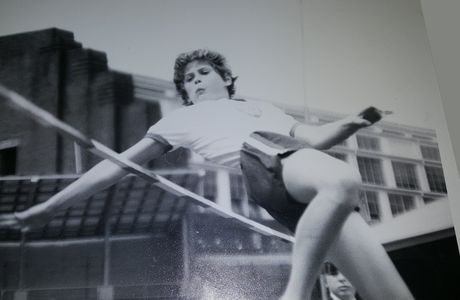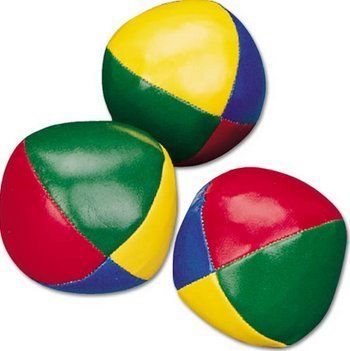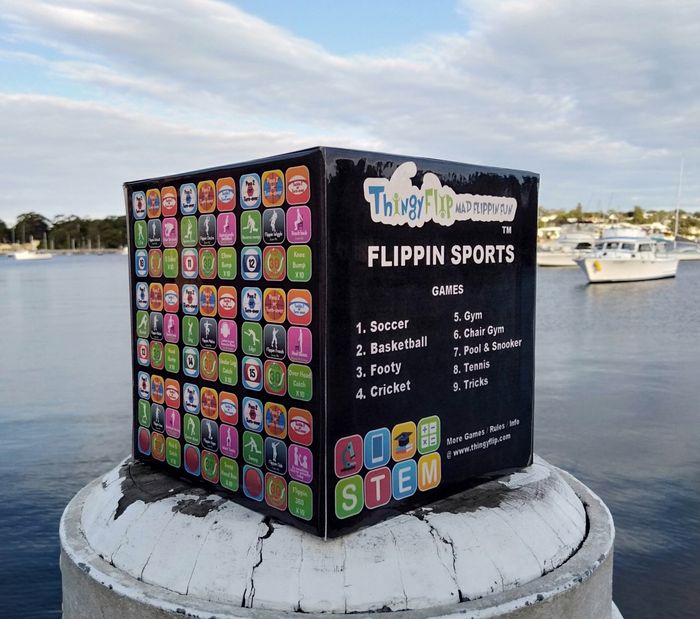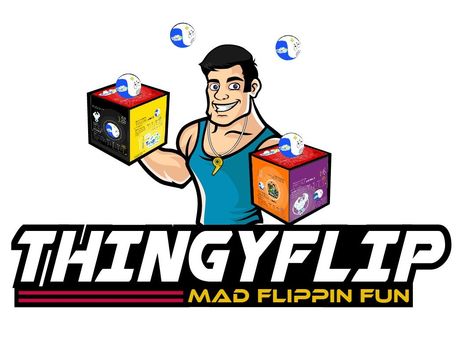See how the Thingy Flip was Invented.
Thingy Flip Founder and Inventor - Dominic See
Thingy Flip was created to meet a need for engaging hand-eye coordination games
for kids. The mission is to increase kids brain power and develop their skills in a fun
way. Imagine all the new brain pathways needed to learn to catch on all sides of
each of your hands. This is what is possible with the Thingy Flip as you no longer
simply catch with an open palm but you twist to hit all 5 sides of the box which
takes added focus and skill!
With the increased use of devices such as laptops, tablets, smartphones, and
gaming consoles many kids simply don’t develop good hand-eye coordination skills.
This means they can be missing out on developing skills and challenging their brains
in new, dynamic ways. It is astonishing how important these skills are, with some
studies linking learning these types of skills with increased brain gray matter, which
we discuss in more detail below.
A way to record children’s and young people's Motor Skills Development!
The Thingy Flip is the first Hand-Eye Coordination Grading (HECG) system. Check out our
grading system (we call them Licences) which is fun and rewarding for the kids, but is also a way to monitor their progress and development.
It is of course important that children learn the essential skills of literacy and numeracy at school which is already heavily tested and graded throughout their school years. We can see how important this aspect of development already is in the education system here:
However, what about their hand-eye coordination and motor skills? Sure, some kids might
be considered good at sports and others not so much. Some scores are recorded for their
athletic achievements, if they participate. But, imagine if it was considered an integral and
normal part of the curriculum? We think this is so important! We discuss brain development and its connection to motor skills and learning later. It is all linked, and this is part of the reason Thingy Flip was invented. We want to bridge that gap so that kids start participating more in physical learning and take some time off the devices.
The Beginning: Dominic’s Story
Founder and Inventor, Dominic See, was inspired to create the Thingy Flip after
going through his own turmoil at school when he was a kid. The Thingy Flip was
born out of this past pain combined with a flash of inspiration, some almost 50 years
later.
Dominic struggled in school academically. During primary school he had such low
self esteem because he felt so behind all the other kids. He had consistent failing
grades (E’s and even F’s) and really hated being at school. On the flip side though,
Dominic was always naturally a great sportsman. He proudly jumped 2 metres in
high jump and was a 1st XV rugby player. However, it did not help his lack of
confidence from his poor concentration and results in class. Struggling with
dyslexia and undiagnosed hyperactivity, it seemed so hard to focus. The words
on the page seemed to blur before his eyes whenever he tried to concentrate. It
seemed futile and so frustrating. He would take any excuse to cause disruption in
class to distract from the classwork which seemed impossible to complete.
However, when he was around 9 years old he became obsessed with learning to
juggle. Dom had tried when he was younger but it was always too hard. Not this
time though, he was determined. He learned how to juggle 3 balls and got better
over the following couple years. Something interesting happened once he started
juggling regularly. He found that his grades dramatically improved and rather
than completely failing, he started to get C’s, D’s and sometimes even B’s. This
might not seem like much to some, but it was a huge improvement. He still recalls
how he was actually able to concentrate in class again. From this his confidence
grew and he became a lot happier, and a lot less disruptive in class!
What he experienced back then stayed with him for life and eventually came the
flash of inspiration to create this unique game. His personal mission is to help not
only kids who are struggling like he did, but all children and young people to develop
new skills and improve their cognitive abilities in a fun and easy way. Dominic’s
ultimate goal would be to see IQ levels rise in the next generations, rather than
potentially fall as some studies are suggesting 1.
Why the Thingy Flip?
Now, research has shown juggling actually increases grey matter in the brain 2. Could
this be why it helped Dominic do better in school? He feels there must be a link!
Dominic knew that juggling was a pretty hard skill to learn and not all kids would
dedicate the time to master it. From having the first hand experience of such a
noticeable improvement at school, as well as learning about the current research in
this area, he created the Thingy Flip. He invented something that provides similar
skills to juggling, but that is easier and includes hundreds of engaging games that
kids love.
The Research that Inspired the Thingy Flip
IQ levels seem to be decreasing and it is suggested it could be from environmental
factors, not so much genetics 1. Although, it has also been suggested by some that
perhaps it could be the IQ tests that are not accurately portraying intelligence either.
It is hard to be certain what exactly could be causing this apparent decline in IQ test
results. However, to think that we are declining over time is a concern! Could it be
from our changed lifestyles with most kids spending all of their free time hooked on
devices and not out playing for hours on end, like they would have a couple decades
ago?
These thoughts were enough to get Thingy Flip Inventor and Founder Dominic,
motivated to help kids develop skills in a fun way that could hopefully keep
intelligence levels from declining!
There have been quite a few articles written around the results of the study on
declining IQ levels by Bratsberg and Rogeberg 1 and the potential implications. If you
are interested, we have posted some further reading below of different perspectives
on these fascinating findings.
can-we-do-about-it
https://www.sciencealert.com/iq-scores-falling-in-worrying-reversal-20th-century-intelligence-boom-flynn-
effect-intelligence
https://slate.com/technology/2018/09/iq-scores-going-down-research-flynn-effect.html
During around the first three years of life, children are very much right-brain
dominant, as has also been linked to attachment theory and why they seem largely
governed by emotions 3. The right-sided brain function is very much around
emotional, intuitive experience and perception. It is thought that around ages 4 - 7,
things shift and the left side becomes more involved 3. The left hemisphere is linked
to logic and reasoning.
Not all children develop the same of course and not all will display the noticeable
change from the predominant right hemisphere learning styles to the left at each
age. Those children who function more from the right brain may find it harder to
concentrate and pay attention to details. They are often more creative, impulsive and
abstract in their thinking.
The left hemisphere of the brain is in charge of the right side of the body. The right
hemisphere of the brain, the left side of the body. However, studies suggest that
both sides of the brain (and the corresponding side of the body) contribute unique
mechanisms that assist motor function and learning 4. It seems both sides are
required for different but complementary functions 4.
This is one of the reasons why we feel it is important to get kids using both sides of
their brains by practising and learning new skills through motor actions such as
catching and throwing with the Thingy Flip. It seems currently, the predominant
laptops) at school and at home. We feel it is important that they also get back to
doing a lot more physical playing which will challenge their hand-eye (brain)
coordination too.
So what is the link to juggling skills and IQ levels decreasing?
A very interesting study in 2004 showed an increase in the grey matter after
participants learned to juggle 2. In this study, all participants were inexperienced in
juggling. They were separated into two groups: the juggling group, and the non-
juggling group. The juggling group was given 3 months to learn how to juggle 3
balls. MRI scans were taken of all the participant’s brains at the beginning of the
study. Once those in the juggling group had become skilled, namely that they could
achieve at least 60 seconds of 3-ball cascade juggling, they had another MRI scan of
the brain. A third scan was also performed 3 months in which time the jugglers had
not been practicing or adding to their learned skill set.
Group comparison showed that the juggler group showed an increase in brain gray
matter in the mid-temporal area (hMT/V5) from the first MRI scan compared to the
second scan. This decreased in the third scan, which was the period when they
stopped practicing juggling. The non-juggler group showed no increase in gray
matter over the same period.
You can also read a good summary of the study here:
So considering that IQ levels may be decreasing and that juggling skills practice
demonstrated an increase in gray matter, could it be that regular use of a device
such as the Thingy Flip would be beneficial to our brain function? This very question,
along with the Founder’s personal experience, is what lead to the development of the Thingy Flip.
Our Ultimate Goal
At Thingy Flip, we hypothesis that people who use a Thingy Flip regularly will
increase their IQ levels or perhaps more simply, increase their cognitive abilities. Yes,
it’s a big call. We would love for you to join us in our mission to further discover the
links between learning new skills, particularly those involved in hand-eye
coordination like the Thingy Flip, with increased cognitive abilities. The best part is
that it isn’t grueling training. It is fun and there are so many tricks to master and
games to play!
References
1 Bratsberg, B. and Rogeberg, O., 2018. Flynn effect and its reversal are both environmentally caused. Proceedings of the National Academy of Sciences, 115(26), pp.6674-6678.
2 Draganski, B., Gaser, C., Busch, V., Schuierer, G. al, e. 2004, Changes in grey matter induced by training, Nature, vol. 427, no. 6972, pp. 311-2.
3 Schore A.N., 2000, “Attachment and the regulation of the right brain”. Attachment and Human Development.
2000;2(1):23-47. doi:10.1080/146167300361309
4 Mutha, P. K., Haaland, K. Y., & Sainburg, R. L. , 2012. “The effects of brain lateralization on motor control and
adaptation”. Journal of motor behavior, 44(6), 455–469. https://doi.org/10.1080/00222895.2012.747482

Juggling helped my eye hand coordination, concentration, maths, spelling, writing, and most importantly confidence.







Its like juggling but even more fun with 100s of games to play.
The Thingy Flip: Combating Device Distractions for
Education and Mental Health
The Thingy Flip Hyper Eye-Hand Coordination Program:
A Solution to Device Distractions and its Impact on Education and Mental Health
Introduction
In today's digital age, devices have become an integral part of our lives. From smartphones to tablets and laptops, we rely on these devices for communication, entertainment, and accessing information. However, the excessive use of devices has also brought along several negative consequences. One significant issue is the distraction they pose, hindering our engagement in physical activities and brain exercises that are vital for our overall well-being, especially eye-hand coordination and cognitive function. This article explores the adverse effects of device distractions on education and mental health, and introduces the Thingy Flip Hyper Eye-Hand Coordination Program as a potential solution.
The Impact of Device Distractions on Education
Devices have transformed the way we learn, with online platforms providing access to a vast amount of information. However, they have also introduced distractions that can adversely affect educational outcomes. When students constantly switch between educational tasks and social media platforms or games, their focus and concentration suffer. This impairs their ability to retain information and hampers the learning process. Additionally, prolonged device use has been linked to decreased academic performance, as students spend more time on non-educational activities instead of studying or completing assignments.
Moreover, the sedentary nature of device use contributes to a more sedentary lifestyle, reducing opportunities for physical exercise. Regular exercise has been proven to enhance cognitive abilities and memory retention, meaning the lack of physical activity resulting from device distractions can indirectly impact academic performance.
The Impact of Device Distractions on Mental Health
Excessive device use has also been associated with various mental health issues. Social media platforms, in particular, have been linked to increased rates of anxiety, depression, and low self-esteem. Constant exposure to curated and idealized versions of others' lives can lead to negative social comparisons, fostering feelings of inadequacy and diminishing overall mental well-being.
Moreover, the addictive nature of devices and the constant need for stimulation can disrupt sleep patterns, leading to sleep deprivation. Lack of proper sleep has detrimental effects on mental health, resulting in irritability, difficulty concentrating, and increased stress levels. Additionally, spending excessive time on devices often leads to a sedentary lifestyle, further exacerbating mental health concerns such as obesity and related conditions.
Introducing the Thingy Flip Hyper Eye-Hand Coordination Program
Recognizing the need to combat the negative consequences of device distractions, the Thingy Flip Hyper Eye-Hand Coordination Program offers a promising solution. This innovative program focuses on enhancing eye-hand coordination and cognitive function through a fun and engaging activity for single users, families, groups or teams.
The Thingy Flip is a handheld device specially designed to improve eye-hand coordination by challenging the user to toss and catch it on ten different sides of their hand. This seemingly simple activity activates and strengthens various neural pathways, creating new connections in the brain. Just like playing two sets of tennis, this program provides a comprehensive workout for the brain, involving multiple shots ( Eye hand coordination ) and movements.
One of the key advantages of the Thingy Flip program is its time efficiency. While a traditional 2 set tennis game may take up to 90 minutes and provide around 570 shots, the Thingy Flip allows users to achieve 600 shots within just 10 minutes. This makes it a convenient and effective option for those with busy schedules who still want to reap the benefits of physical and mental exercise.
Furthermore, the Thingy Flip Hyper Eye-Hand Coordination Program is designed to be an essential tool for maintaining brain health in the future. Similar to how losing a toothbrush would prompt immediate replacement, losing a Thingy Flip should be viewed as a priority, emphasizing the importance of regular engagement with the program for long-term cognitive well-being.
In an era dominated by digital devices, it is crucial to recognize the detrimental effects they can have on our physical and mental well-being. Device distractions not only hinder our engagement in physical activities but also impede important brain exercises, such as eye-hand coordination. These distractions have significant implications for education and mental health, affecting academic performance and contributing to various mental health concerns.
Fortunately, the Thingy Flip Hyper Eye-Hand Coordination Program offers a promising solution to counteract the negative impact of device distractions. By providing a fun and engaging activity, the program promotes eye-hand coordination and cognitive function. The Thingy Flip, a handheld device designed specifically for this purpose, challenges users to toss and catch it on ten different sides of their hand. This seemingly simple activity activates and strengthens neural pathways, creating new connections in the brain.
One of the program's key advantages is its time efficiency. Traditional sports like tennis can be time-consuming, requiring significant dedication. However, the Thingy Flip program allows individuals to achieve the equivalent of 600 shots in just 10 minutes, making it an accessible and convenient option for busy individuals seeking to improve their physical and mental capabilities.
Furthermore, the Thingy Flip Hyper Eye-Hand Coordination Program aims to be an integral part of maintaining brain health in the future. Similar to the immediate replacement of a lost toothbrush, losing a Thingy Flip should be viewed as a priority, highlighting the importance of regular engagement with the program for long-term cognitive well-being.
By investing in a Thingy Flip and participating in the program, individuals can counteract the negative effects of device distractions. The program provides an opportunity to enhance eye-hand coordination, stimulate cognitive abilities, and foster a healthier lifestyle. Through consistent use, users can develop and strengthen vital neural pathways, improving their focus, concentration, and overall mental acuity.
Moreover, incorporating the Thingy Flip Hyper Eye-Hand Coordination Program into educational settings can yield substantial benefits. Educators can introduce this engaging activity as part of physical education programs, promoting not only physical fitness but also cognitive development. By encouraging students to participate in activities that challenge their eye-hand coordination, schools can mitigate the negative impact of device distractions on academic performance and promote holistic development.
In conclusion, the excessive use of devices and the distractions they bring have significant consequences for education and mental health. However, the Thingy Flip Hyper Eye-Hand Coordination Program offers a solution to combat these issues. By investing in a Thingy Flip and engaging in the program, individuals can enhance their eye-hand coordination, stimulate their brain, and counteract the negative effects of device distractions. As we look towards the future, prioritizing brain health through programs like the Thingy Flip will become as essential as any other self-care routine. So, take the step now and invest in a Thingy Flip to support your brain's health and unlock your full potential.
Eye-hand coordination refers to the ability to use visual information to guide the movements of our hands and fingers. It plays a crucial role in various human activities, including sports, daily tasks, and fine motor skills. Tossing and catching balls using the palms of our hands is one activity that has helped in the brain development of mankind by enhancing this coordination.
When we engage in the activity of tossing and catching balls, several key processes occur simultaneously, involving the brain, eyes, and hands. Here's a breakdown of how this activity contributes to brain development:
Visual Perception: Tossing and catching balls require us to visually track the ball's trajectory, speed, and direction. Our eyes send this information to the brain, which processes it and interprets the visual cues. This process enhances visual perception and develops our ability to judge distances and motion.
Hand-Eye Coordination: As we track the ball with our eyes, our brain simultaneously sends signals to our hands, instructing them to move and position themselves to catch the ball accurately. The brain's ability to coordinate these movements with visual information strengthens the connection between the visual and motor areas, improving hand-eye coordination.
Motor Skills: Catching a ball involves complex motor skills, including hand positioning, grip adjustment, and finger dexterity. Regularly practicing these movements refines our fine motor skills and strengthens the neural connections between the brain and muscles involved. This development is not limited to the hand muscles but also extends to the larger muscle groups involved in arm movements.
Proprioception: Tossing and catching balls engage our proprioceptive senses, which provide feedback about body position and movement. When we catch a ball, our brain receives continuous feedback about the position and orientation of our hands in space. This feedback is crucial for coordinating our movements and making adjustments to catch the ball successfully.
Cognitive Processing: The activity of tossing and catching balls requires us to process and react to visual information quickly. This rapid cognitive processing involves attention, decision-making, and anticipation. Regularly engaging in this activity challenges the brain's cognitive abilities, improving reaction times, concentration, and overall cognitive function.
By consistently practicing tossing and catching balls, individuals can improve their hand-eye coordination, motor skills, proprioception, and cognitive processing. These improvements contribute to the overall development and refinement of neural connections in the brain. The brain's plasticity allows it to adapt and rewire itself based on the experiences and activities it engages in, leading to enhanced brain development in the context of eye-hand coordination.
The effects of tossing and catching on 10 sides of our hands
The exercise involving the Thingy Flip, a box with a handle in the middle, and the task of tossing and catching balls on its 10 different sides has several effects on the brain when performed regularly, akin to a habitual activity like cleaning your teeth. Here are the significant effects it can have:
- Sensory Integration: Tossing and catching balls on multiple sides of the Thingy Flip engages various sensory inputs, including visual, proprioceptive (body position and movement), and tactile (touch) feedback. The brain integrates these sensory inputs, enhancing its ability to process and interpret information from different sources simultaneously.
- Hand-Eye Coordination: The complex nature of the exercise requires precise hand-eye coordination. The brain strengthens the connections between the visual and motor areas, improving the ability to synchronize the movements of the hands with the visual cues of the ball's trajectory and the desired landing side. This leads to enhanced hand-eye coordination and motor control.
- Motor Planning and Execution: Tossing and catching balls on different sides of the Thingy Flip involves intricate motor planning and execution. The brain is constantly engaged in the process of strategizing the toss, adjusting the grip, and coordinating the timing of hand movements. With regular practice, the brain becomes more efficient in planning and executing complex motor sequences.
- Cognitive Flexibility: The exercise requires quick decision-making and adaptability. The user must choose the landing side and adjust the positioning of the Thingy Flip accordingly. This challenges the brain's cognitive flexibility, allowing it to switch between different mental sets and adjust strategies based on the changing circumstances. Regular practice promotes cognitive flexibility and improves the brain's ability to adapt and respond to new situations.
- Concentration and Focus: Tossing and catching balls on multiple sides of the Thingy Flip demands sustained concentration and focus. The brain strengthens its attentional processes as it maintains focus on the ball's trajectory, adjusts grip and speed, and ensures the box is level for the ball to land properly. This exercise improves concentration skills and helps in sustaining attention for longer durations.
- Neuroplasticity: Regularly engaging in the exercise promotes neuroplasticity, the brain's ability to reorganize itself and form new neural connections. The brain's plasticity allows it to adapt and refine its neural pathways, reinforcing the connections between the visual, motor, and cognitive areas involved in the task. This leads to improved overall brain function and enhances learning and memory abilities.
- Stress Relief and Emotional Well-being: Physical activities that require focus and coordination, such as the Thingy Flip exercise, have been linked to stress reduction and enhanced emotional well-being. Engaging in the exercise releases endorphins, which are natural mood elevators. Regular practice can help alleviate stress, improve mood, and contribute to a sense of achievement and satisfaction.
- In summary, regularly practicing the Thingy Flip exercise, involving tossing and catching balls on its multiple sides, has a range of positive effects on the brain. These effects include enhanced sensory integration, improved hand-eye coordination, refined motor planning and execution, increased cognitive flexibility, strengthened concentration and focus, neuroplasticity, and potential stress relief. By incorporating this exercise into a routine, individuals can harness these benefits and further promote their brain's development and overall cognitive abilities.
Number
36
The Thingy Flip has 36 landing spots Whats the meaning of 36?
Contact us
Contact Us



